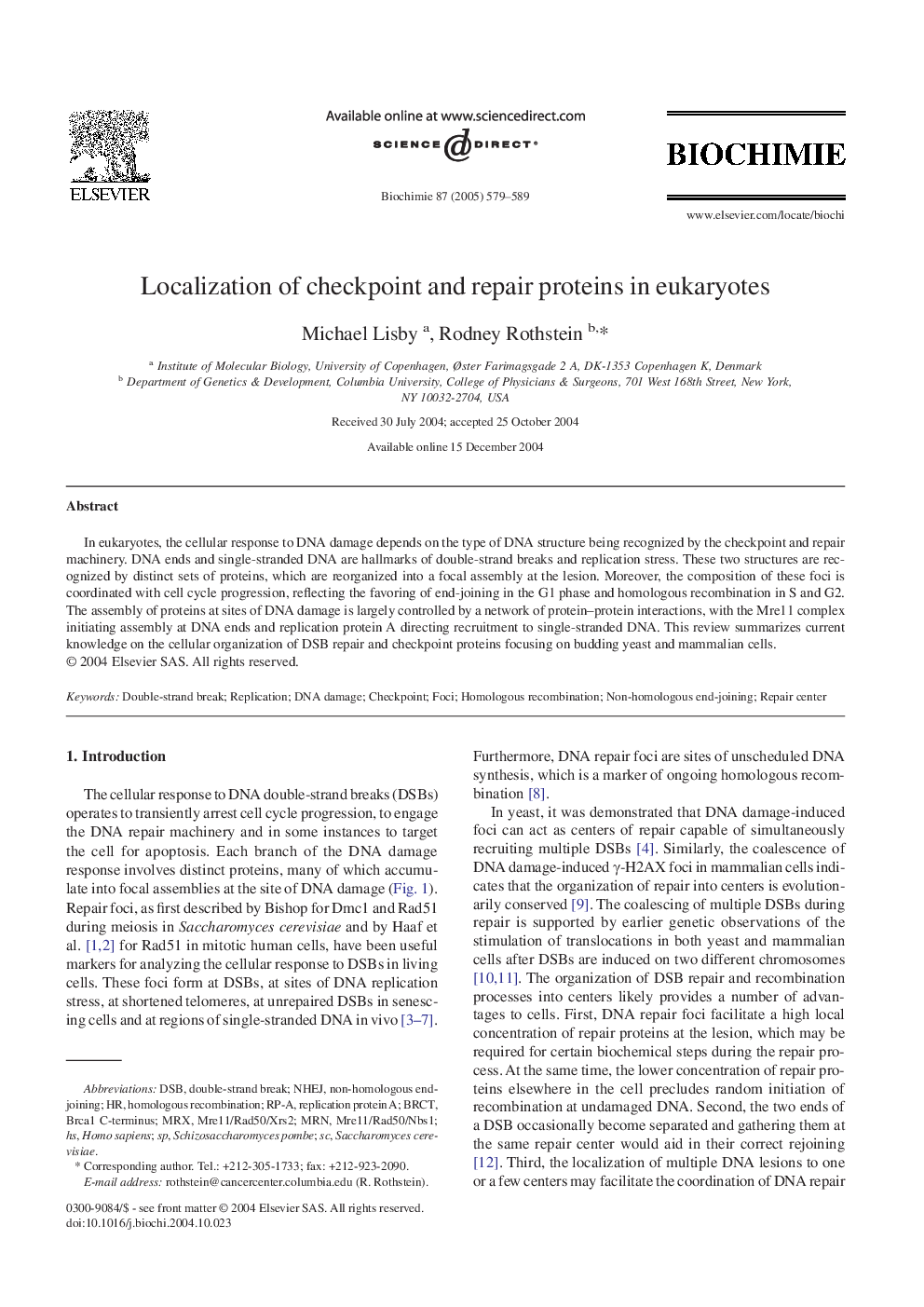| Article ID | Journal | Published Year | Pages | File Type |
|---|---|---|---|---|
| 10804380 | Biochimie | 2005 | 11 Pages |
Abstract
In eukaryotes, the cellular response to DNA damage depends on the type of DNA structure being recognized by the checkpoint and repair machinery. DNA ends and single-stranded DNA are hallmarks of double-strand breaks and replication stress. These two structures are recognized by distinct sets of proteins, which are reorganized into a focal assembly at the lesion. Moreover, the composition of these foci is coordinated with cell cycle progression, reflecting the favoring of end-joining in the G1 phase and homologous recombination in S and G2. The assembly of proteins at sites of DNA damage is largely controlled by a network of protein-protein interactions, with the Mre11 complex initiating assembly at DNA ends and replication protein A directing recruitment to single-stranded DNA. This review summarizes current knowledge on the cellular organization of DSB repair and checkpoint proteins focusing on budding yeast and mammalian cells.
Keywords
Related Topics
Life Sciences
Biochemistry, Genetics and Molecular Biology
Biochemistry
Authors
Michael Lisby, Rodney Rothstein,
